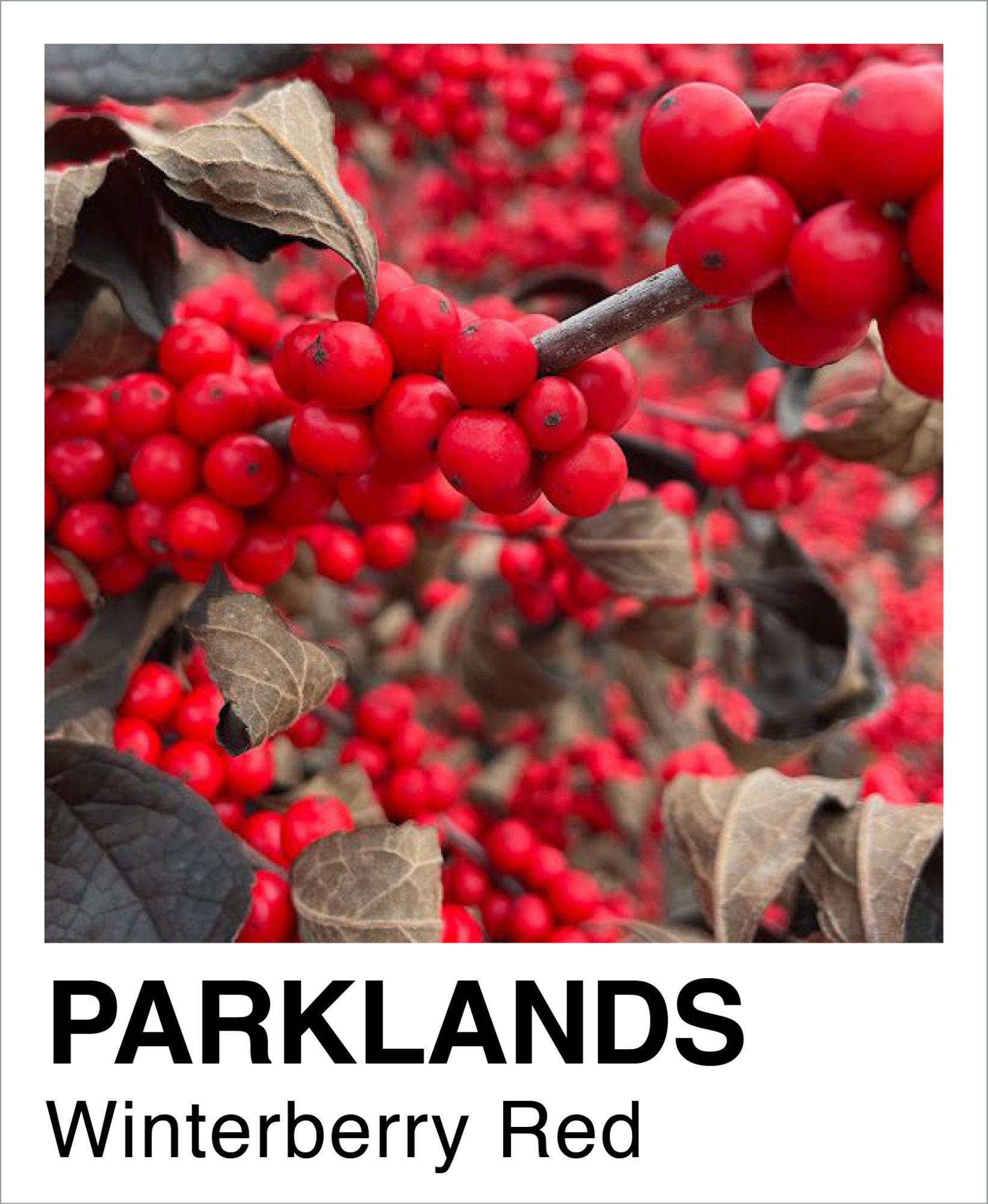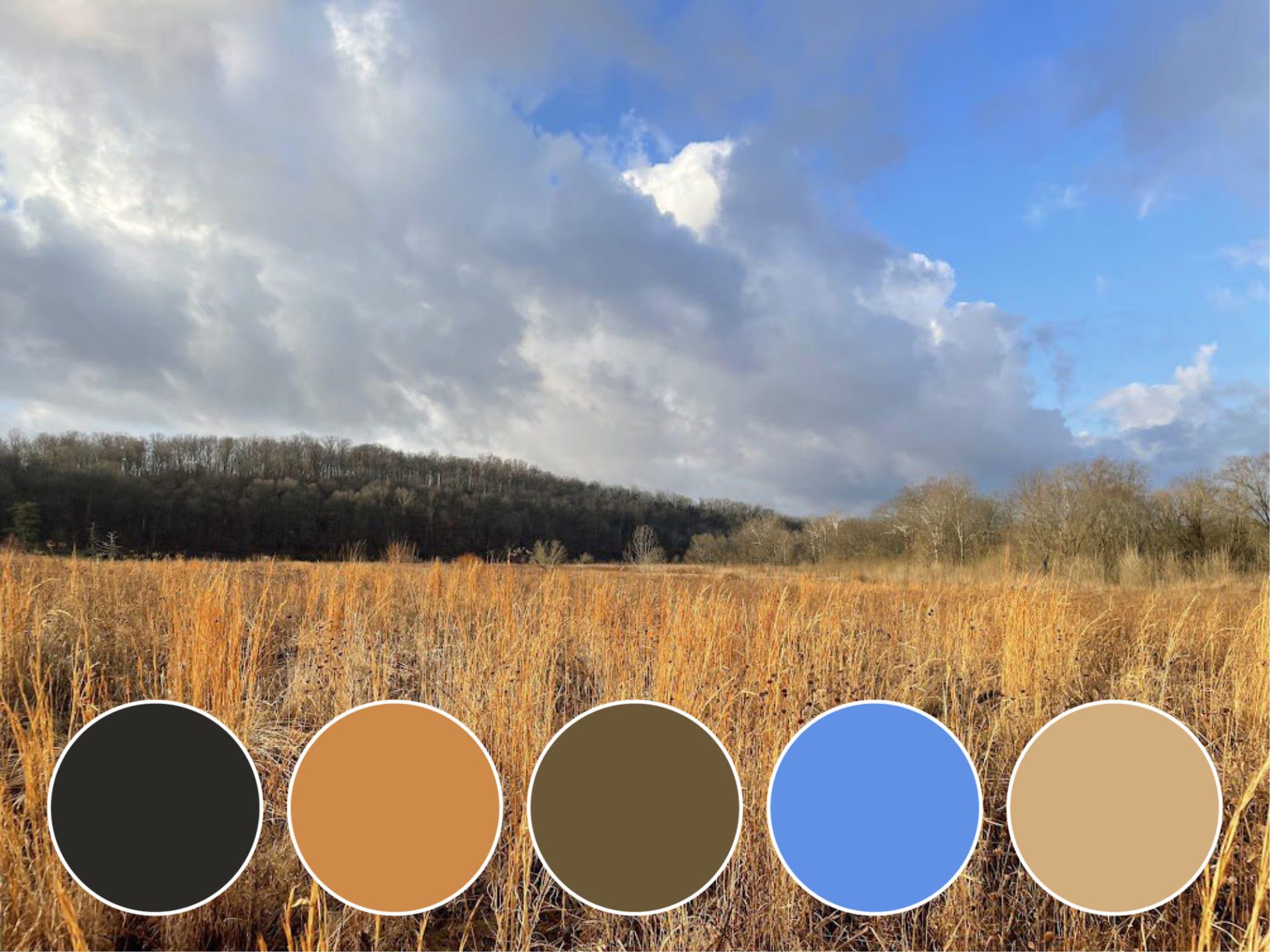
Winter’s color variety: a palette full of beauty and interest
Getting out in nature can be invigorating and awe-inspiring at any time of the year. In the winter season, the colors are mostly subdued, but the overall palette can be quite pleasing, especially when you’re strolling through a setting like the Moss Gibbs Woodland Garden in Broad Run Park. This is where you can see a full range of colors that come to life through sunlight and textural variations in the landscape.
In this article, Tyler Hampton, Assistant Director of Horticulture at The Parklands, highlights areas and plant species that contribute to the winter palette throughout our parks. After perusing this serene color scheme, and its many points of expression in our parks, we hope you’ll have the opportunity to experience the visual wonder for yourself!
A breathtaking palette grounded in neutrals
Winter’s palette at The Parklands is characterized by beautifully nuanced neutrals, deep evergreens, warm purples, along with touches of brightness and tranquil blue.
When you take in these colors together and consider their distinct combinations and contrasts, it’s breathtaking and even fun to observe. If we were to give the palette a name, it might be “Wintry Color Mix” or “Sublime Wintertime.” We’d love to hear your ideas! Send us your suggestions so we might include them in our monthly newsletter. Email us at info@theparklands.org.
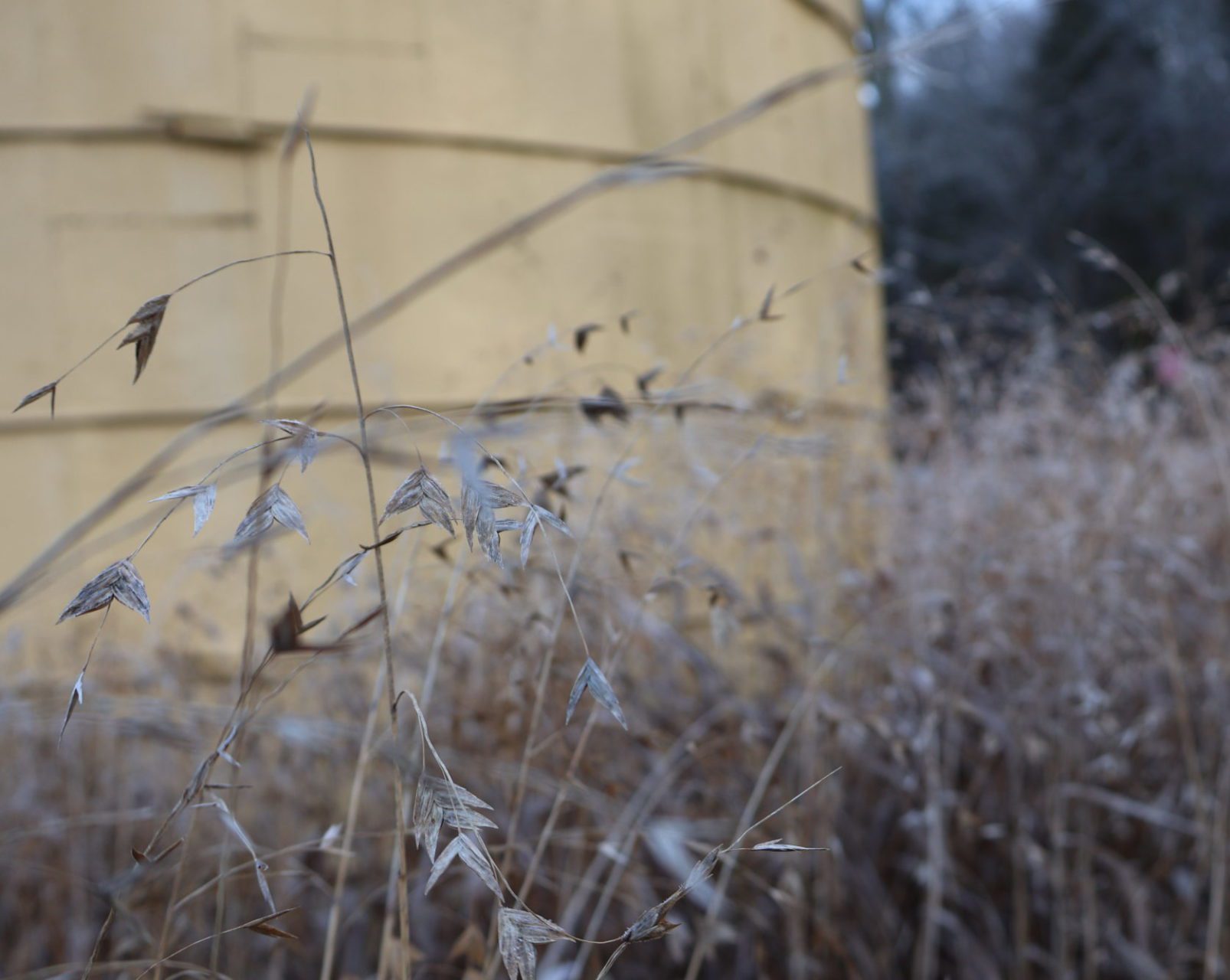 Primary Colors of Tan and Golden Brown
Primary Colors of Tan and Golden Brown
Grasses throughout our park landscapes tend to have light tan and golden colors in winter. Tyler says these include switchgrass (Panicum) varieties, pink muhlygrass (Muhlenbergia capillaris), prairie dropseed (Sporobolus heterolepis), side-oats grama (Bouteloua curtipendula), and many others.
The beauty of our grasses is prominent near the Gheens Foundation Lodge in Beckley Creek Park, the Cliffside Center at Broad Run Park, and the West Entry to the Woodland Garden at Broad Run. Look to the Cliffside Center for grasses showing an exquisite interplay of light and dark neutrals. Our horticulture team has carefully selected grass varieties in this area with a vision for how the hues might appear in the wintertime.
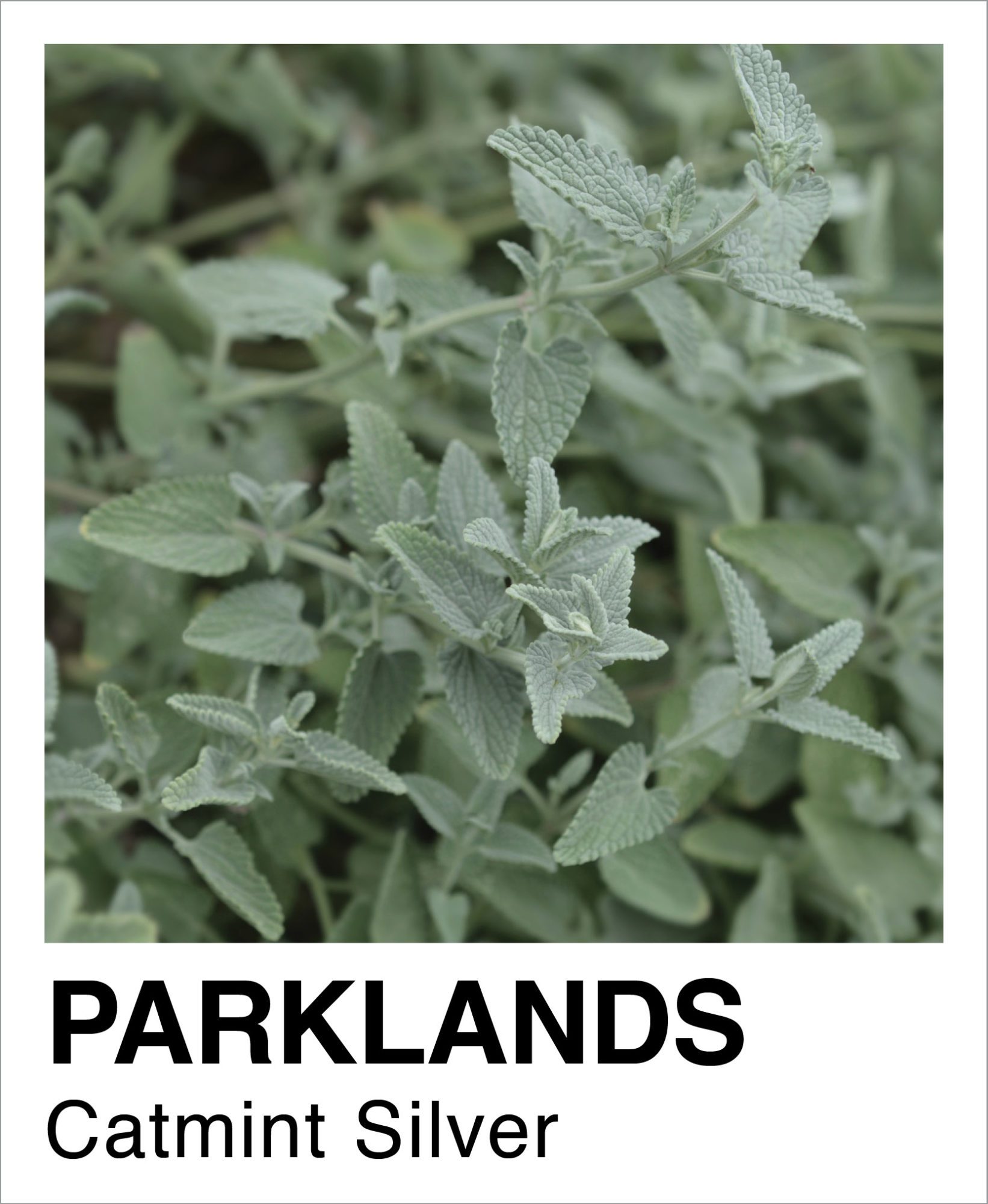
Accents of Silvery Gray
Catmint (Nepeta varieties) is a plant in our landscapes that adds silvery gray color, even in winter. In the Woodland Garden, Allegheny spurge (Pachysandra procumbens) is a perennial with silvery watermarks. Older beech trees in this and other deciduous areas have a smooth bark with a soft gray appearance.
Standout evergreens and semi-evergreens
In the Woodland Garden, evergreens take center stage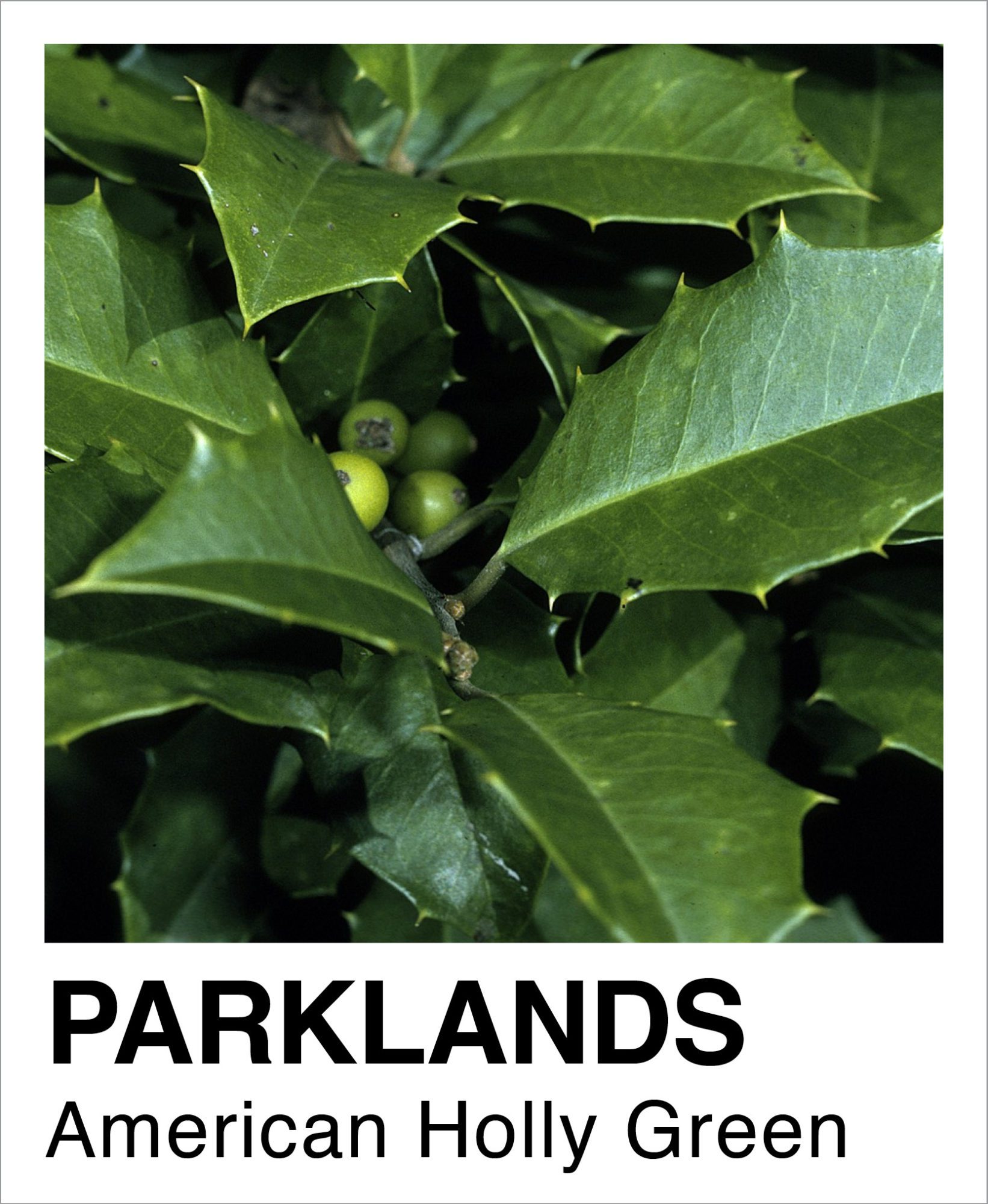 as the deciduous plants lose their leaves. Evergreen ferns such as Christmas ferns (Polystichum acrostichoides) are standouts across the landscape, as are evergreen trees. Tyler says that while the Louisville area has only a few native evergreens and only one broadleaf variety (the American holly, Ilax opaca), other evergreens such as the southern magnolia (Magnolia grandiflora) thrive in the Woodland Garden.
as the deciduous plants lose their leaves. Evergreen ferns such as Christmas ferns (Polystichum acrostichoides) are standouts across the landscape, as are evergreen trees. Tyler says that while the Louisville area has only a few native evergreens and only one broadleaf variety (the American holly, Ilax opaca), other evergreens such as the southern magnolia (Magnolia grandiflora) thrive in the Woodland Garden.
Evergreen trees and shrubs contrast well with the dark shades of other perennials in winter. As a favorite example of this, Tyler cites mountain mints (Pycnanthemum species) and false indigo (Baptisia), which can appear near-black.
Purple and cinnamon undertones
Some woodland plants have evergreen rosettes of leaves hugging the ground with striking purple undersides, such as round-leafed ragwort (Packera obovata), Short’s aster (Symphyotrichum shortii), and crane-fly orchid (Tipularia discolor). Oak leaf hydrangea (Hydrangea quercifolia) has a cinnamon-colored, exfoliating bark that’s a distinct sight to see in winter.
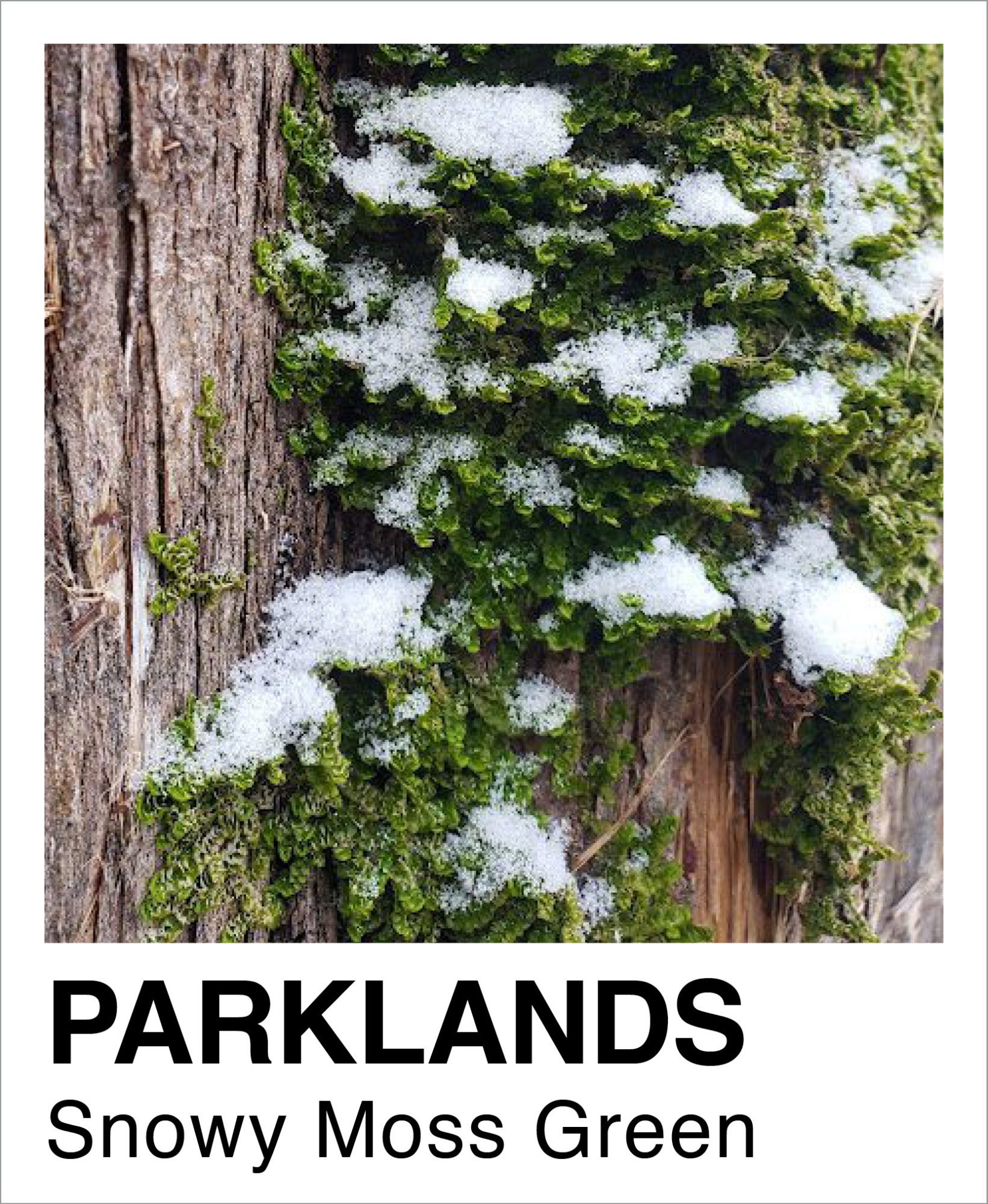 Cheery brights and white snow
Cheery brights and white snow
Tyler says bright green mosses that flourish in forested areas are favorites among park visitors. Winterberries throughout our parks add pops of brightness.
Whenever it snows, the sparkling effects of sunlight shining on the surface can be wondrous to see. It can also be delightful to spot plant life across the snow-covered landscape. You might find some plants covered in snow and others emerging from under the blanket.
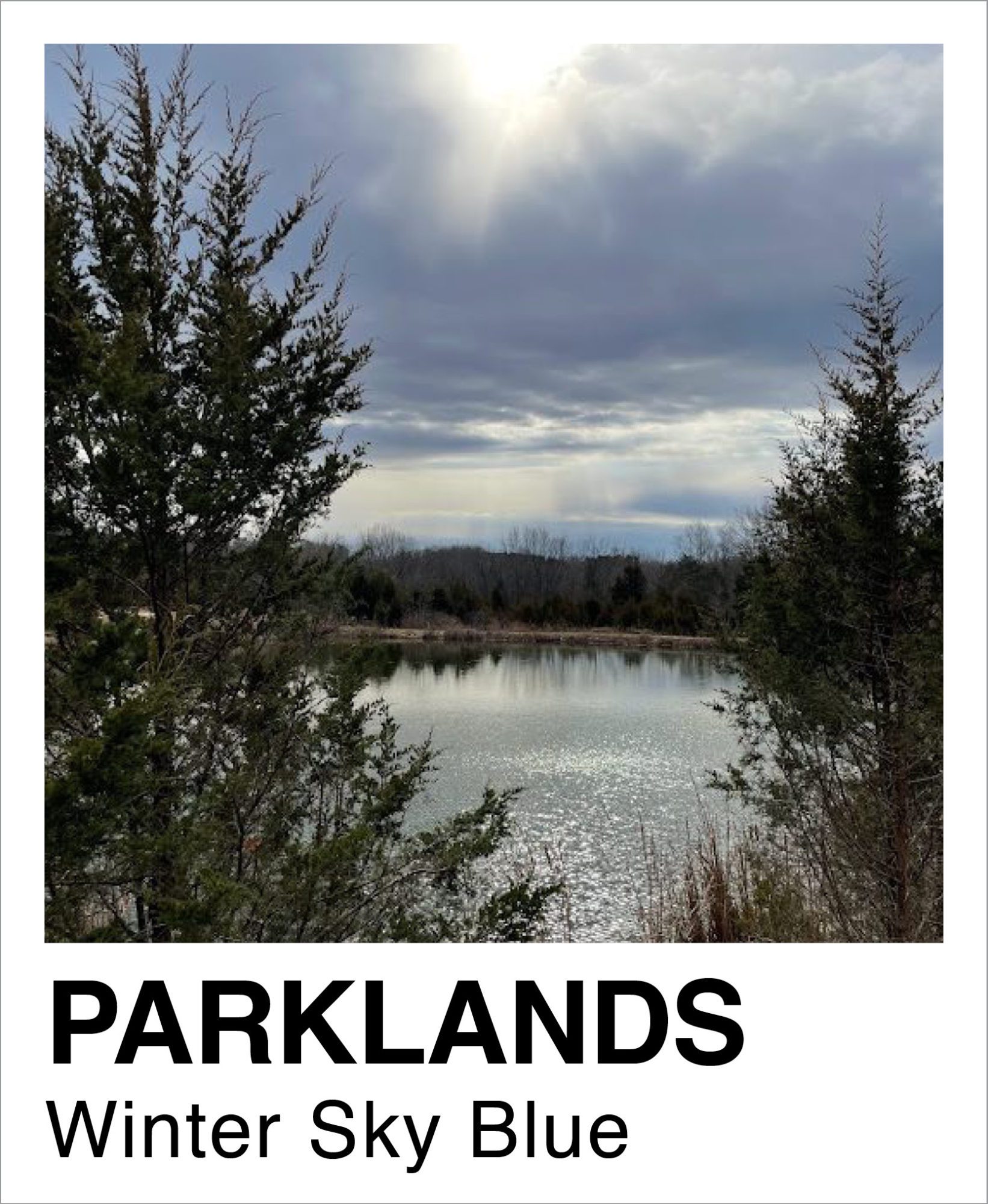 Sky-blue Radiance
Sky-blue Radiance
On a clear winter day, the bright blue color of the sky brings out the beauty of our park landscapes. On days with low-hanging clouds, the sky may be a little grayer, but no less captivating.
Marvels of marcescence
Maybe you’ve noticed how some leaves stay attached to a tree, even though they are dry or wilted. This is a phenomenon in nature called marcescence. There’s a beauty in the way certain leaves linger, while others drop off and drift to the ground.
Tyler notes that while oaks, hornbeam, Eastern hophornbeam, and witch hazels keep their leaves well into winter, he believes this is most notable on American beech. With smooth gray bark, sculptural branching, and copper-tan leaves that remain on young trees (and lower branches of older ones), beeches are something to marvel at during the winter season and all year long.
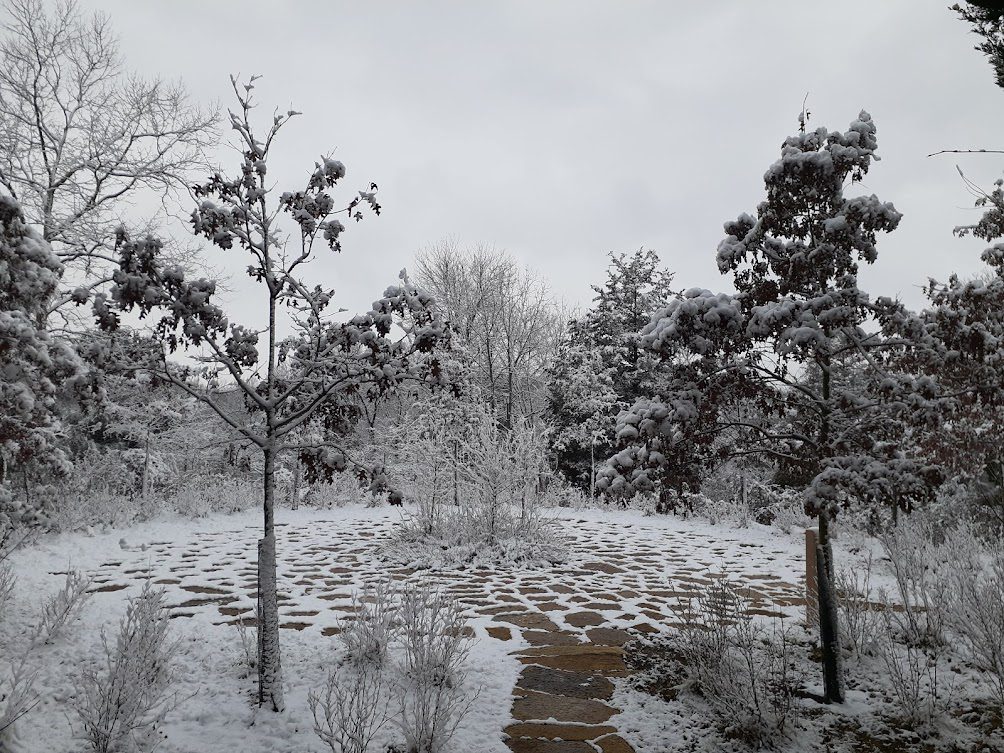 Structural and textural interest all around
Structural and textural interest all around
With the leaves mostly gone, it’s easy to appreciate the structure and form of trees and shrubs. The skeletal form of Kentucky coffeetree, the menacing thorns of honey locust, the horizontal branching of dogwood are just a few examples of how form is at the foundation of wonder in nature.
We hope you’re inspired to immerse yourself in the splendid palette that our parks have to offer this winter season. For your enjoyment and safety, remember to dress for the weather and wear waterproof shoes to keep your feet dry and warm! For maps and more information, visit our sightseeing page. If you’d like to check out our trails, read this article on fall and wintertime hiking.
Special thanks to Kayla Franck, Head Gardener at The Parklands, for taking most of the photos used in this article.

